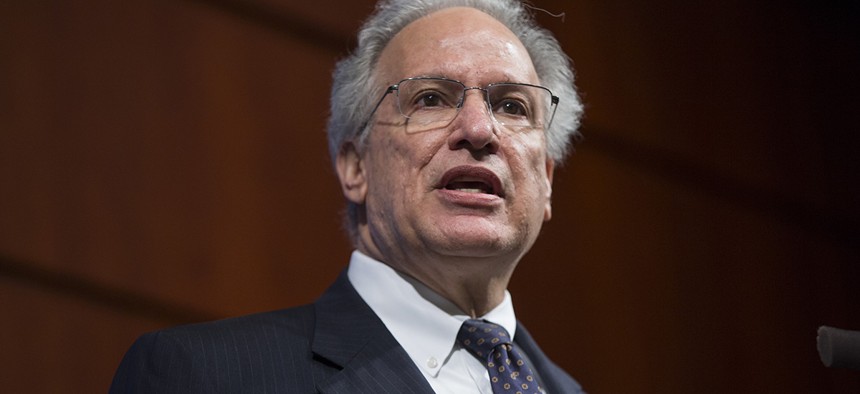Mass Use of Driverless Cars Still 'Years Off,' Official Says

National Highway Traffic Safety Administration administrator Mark Rosekind Evan Vucci/AP
Still, traditional and self-driving cars may co-exist on the roads for decades.
In the future, self-driving cars could eliminate traffic fatalities, a senior transportation official told members of the House Energy and Commerce Committee.
In a hearing today, Mark Rosekind, head of the National Highway Traffic Safety Administration, noted 94 percent of crashes are tied to human error, and investing in software that can better navigate traffic could significantly reduce that number. In opening remarks, Rep. Michael Burgess, R-Texas, also touted self-driving cars as a way to reduce labor costs and provide transportation access to those with disabilities and to underserved populations.
» Get the best federal technology news and ideas delivered right to your inbox. Sign up here.
Here are a few takeaways from what was likely Rosekind's final testimony before Congress:
1. NHTSA and the Homeland Security Department are both aware of potential cyber risks to self-driving cars and are collaborating on solutions.
Earlier this year, a Wired article documented the ease with which internet-enabled cars could be controlled remotely by malicious actors.
Rep. Bret Guthrie, R-Ky., asked Rosekind if NHTSA had "considered broader homeland security issues” related to the potential hacking of self-driving cars.
“Frankly, not only are we looking at them, but Homeland Security has already been informed because they have a lot of issues and questions," Rosekind said. The two groups have "already had meetings" about security risks, he said.
2. NHTSA has a safety guide to walk manufacturers through the development of this technology.
In September, the administration issued a 15-point safety assessment car manufacturers and software developers should provide to the public.
"If you want everyone to trust what you're working on," Rosekind said. "We think you would want to be the most transparent through public notice of what you're doing to address public safety upfront."
Earlier this year, the Transportation Department also issued a Federal Automated Vehicles Policy that requires manufacturers to meet certain standards, such as ensuring computer algorithms for avoiding crashes or other conflicts "should be developed transparently using input from federal and state regulators, drivers, passengers and vulnerable road users, and taking into account the consequences" of a vehicle's actions on other people.
3. NHTSA is trying to avoid a "patchwork" scenario in which states' approaches to self-driving cars vary widely.
The administration is working with states to clarify "what the federal role is and the state role is" in regulating self-driving cars so drivers don't encounter varying laws depending on the state they're driving in, Rosekind said. Still, it's an "ongoing vulnerability here as we move forward," he added.
4. Mass utilization is years off.
While today's traditional cars often have elements of automation—adapted cruise control or blind-spot monitoring, for instance—widespread use of completely automated and demonstrably safe vehicles is "years off," Rosekind said. "There will probably be several decades where we have a mixed fleet of different levels of automation. And people still with their hands on their wheels” for at least 20 years, he added.
NEXT STORY: Video: How to Fly a Plane With Just Your Brain





